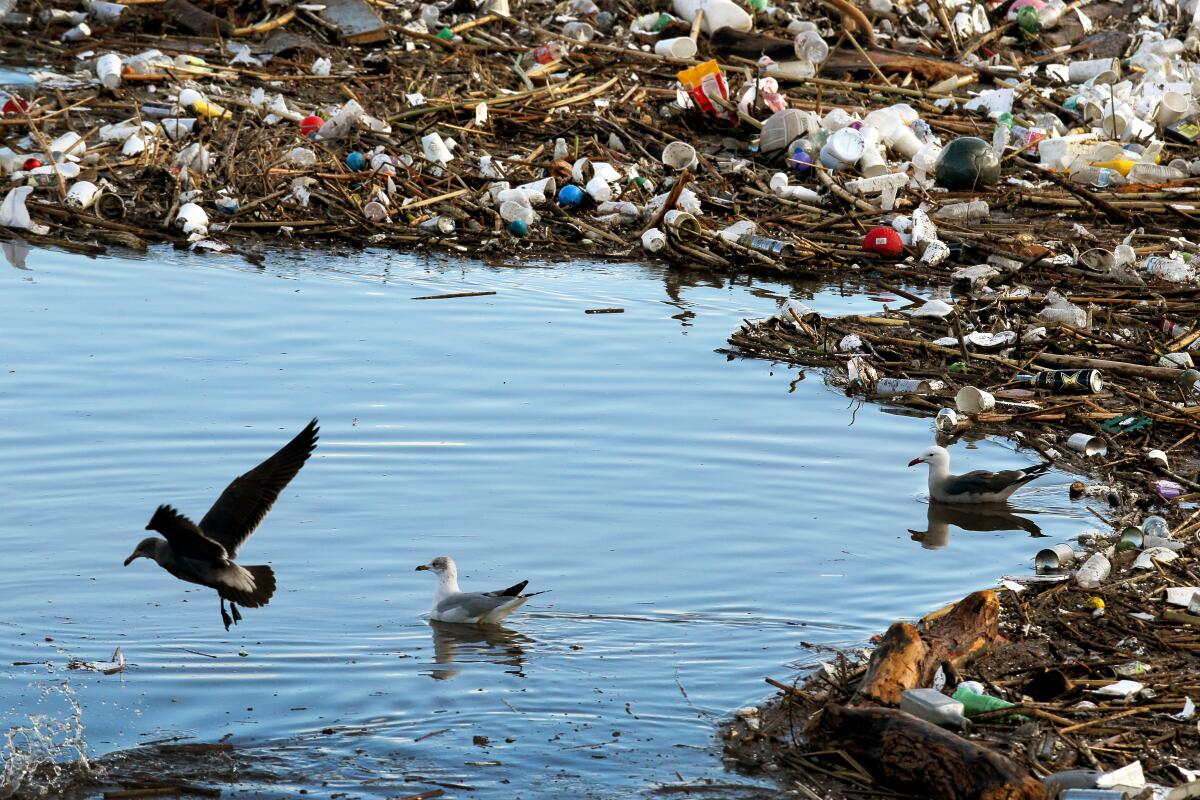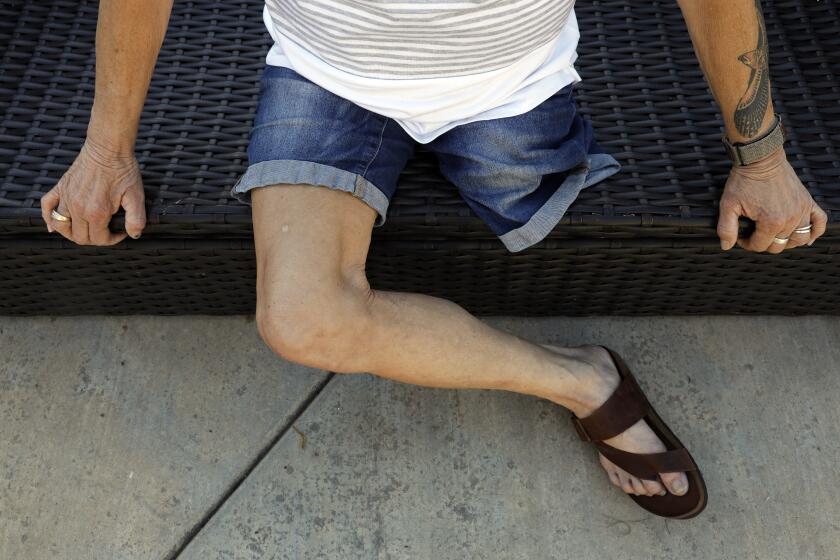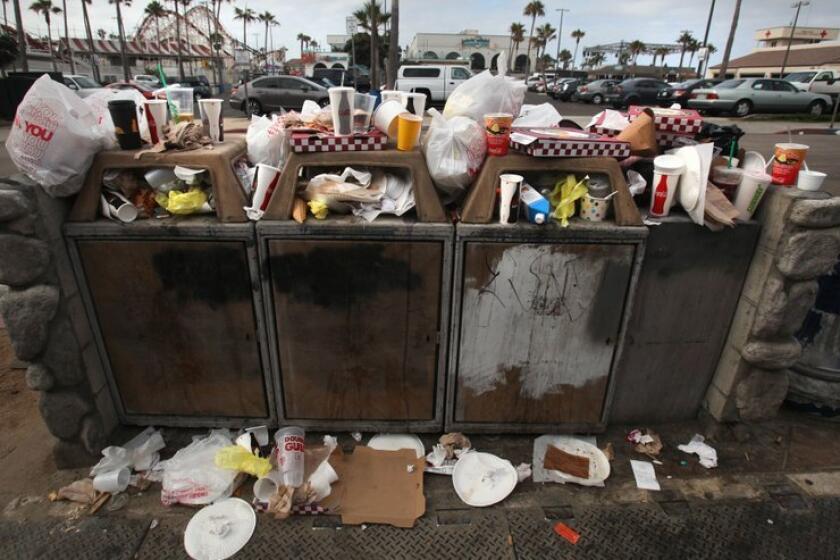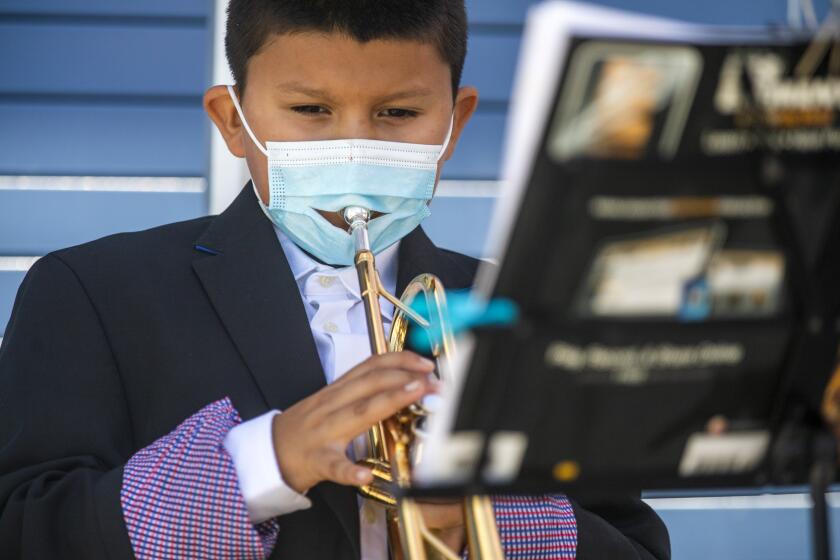Editorial: Not everything should go to the ballot. Lawmakers, do your job

November elections often leave California voters contending with too much of a good thing: a heap of propositions that clutter the ballot. Remember 2016, when the ballot had 17 measures, including two on the death penalty and another two on plastic bags?
On the one hand, Californians love direct democracy — the power to make laws through citizen initiatives, rather than by elected lawmakers. Most voters believe they make better decisions than the Legislature.
On the other, many Californians look at the raft of confusing questions that hit the ballot because of niche industry fights (regulating dialysis clinics? rest breaks for ambulance workers? condoms for porn performers?) and think, how am I supposed to figure this out?
So it was a smart move when the state passed a law eight years ago to give people pushing initiatives more time to work out solutions with lawmakers rather than throwing the issue to the voters. Unfortunately, too few initiative proponents have made use of the law, preferring to put their question to voters instead of negotiating a compromise with their adversaries.
And lawmakers have not played as strong a role as they could in trying to broker agreements. The argument legislators made when they passed the reform in 2014 was that the extra time would allow them to hold hearings on proposed ballot measures and work to resolve the issues in the Legislature. That hasn’t happened much.
Long warring enemies have suddenly negotiated a historic compromise over how much money medical malpractice victims can be awarded for pain and suffering, columnist George Skelton writes.
But one important deal reached recently between the doctors’ lobby and plaintiffs’ attorneys to avoid a costly ballot battle shows the promise of the reform.
For decades, a big-money feud over the limit on pain and suffering payouts in medical malpractice suits pitted trial lawyers, patient advocates and consumer groups against doctors, insurance companies and hospitals. At the crux of their fight is a law known as the Medical Injury Compensation Reform Act of 1975, which caps damages for pain and suffering at $250,000.
The two sides duked it out on the ballot in 2014, pouring a combined $70 million into their campaigns. It looked like they were heading for a rematch this year, with Nick Rowley, a prominent personal injury lawyer, funding a campaign to raise the amount of money that can be awarded in medical malpractice cases.
But then Rowley sat down with Dustin Corcoran, CEO of the California Medical Assn., which was preparing to oppose the initiative. During a series of private meetings facilitated by former Insurance Commissioner Steve Poizner and former Republican state Senate leader Jim Brulte, Rowley and Corcoran crafted a compromise that will gradually raise the amount patients can be awarded for pain and suffering over the next decade. They brought their compromise to the Legislature, which swiftly passed it, and stood alongside Gov. Gavin Newsom last month as he signed it into law.
The agreement is a win not only for the interests directly involved, but also for voters, who will avoid being harangued by a multimillion-dollar advertising campaign that would inevitably reduce this complex policy dispute to crass emotional appeals and misleading political attacks.
The failure of a landmark plastic pollution bill in the Legislature in August was a setback, but not the end of the effort to reduce plastic trash.
Lawmakers should do whatever they can to keep other fights between interest groups off the November ballot, too. They have just a few weeks to get it done before a June 28 deadline.
At the top of the list should be an initiative to significantly reduce single-use plastics that can’t be recycled or composted. Environmentalists gathered signatures to put the measure on the ballot after similar proposals repeatedly failed in the Legislature. It was a smart move. Lawmakers and industry lobbyists are more engaged in resolving the issue now that the initiative has qualified for the ballot, and negotiations with environmentalists are underway.
Industry and business would be wise to find common ground with environmental advocates and get behind a strong plastic packaging-reduction measure that Newsom can sign into law. Otherwise, they’ll be fighting a ballot measure that will likely be popular with voters. More than 60% of California adults believe plastic trash is a big problem on the state’s coastline, according to a survey last year by the independent Public Policy Institute of California. Polling by Oceana, one of the environmental groups behind the initiative, found that 86% of California voters support policies to reduce single-use plastics.
Of course, some things will always go to the ballot, either because the idea won’t get the Legislature’s support or the state constitution requires it. The Legislature generally can’t change laws that were passed by voters, so any changes to, for example, the death penalty or the Proposition 13 property tax law must be made at the ballot.
We believe ballot-box budgeting is bad policy, but proponents of tax increases often prefer to take their ideas to voters because lawmakers are resistant to raising taxes. Two measures headed for the November ballot call for increasing income taxes on the highest earners to pay for specific services, with one focused on pandemic prevention and another on preventing wildfires and increasing subsidies for zero-emission vehicles.
A proposed ballot initiative would dedicate part of the state’s general fund to arts education, which means California couldn’t spend the money on something else it might need more down the road.
Making laws in the Legislature is generally the better way to go. For one, laws made by the Legislature can more easily be updated if problems arise down the line, whereas laws passed by voters can only be changed if voters pass another proposition. For another, the back-and-forth process of negotiating legislation creates more opportunity for input to improve the final law. A ballot measure demands an up-or-down vote, regardless of its flaws.
And finally, there’s the ridiculous amount of money blown on ballot measures. What is supposed to be an avenue for direct democracy has morphed into a special-interest bonanza. In 2020, unions, corporations and other donors spent a mind-blowing $785 million supporting and opposing California ballot measures.
Legislators are elected and paid to sift through complex policy choices and make laws in the public interest. That’s literally their job — which they should be doing whenever they can.
More to Read
A cure for the common opinion
Get thought-provoking perspectives with our weekly newsletter.
You may occasionally receive promotional content from the Los Angeles Times.













